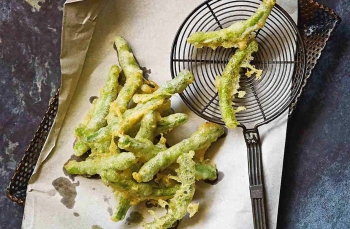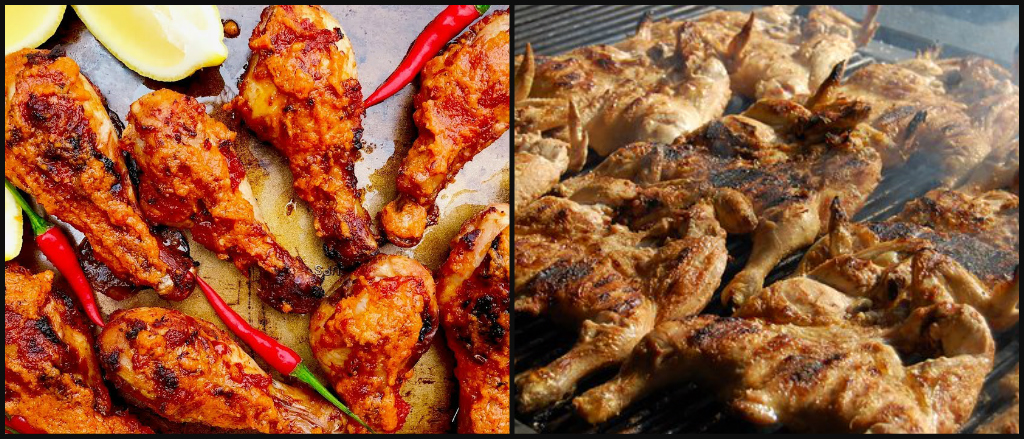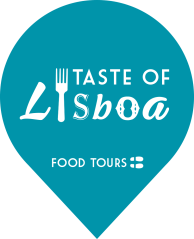Foods you didn’t know were Portuguese

When the Age of Discoveries initiated about 500 years ago, the phenomena we now know as globalization started taking place. Portugal was one of the nations at the forefront of this exchange of cultures across all corners of the world.
The Portuguese, who first explored the North of Africa, traveled to the Americas and, eventually, onwards to Asia. The Portuguese were responsible for making several far-flung cultures mingle, and with this mix of traditions and ways of life, the way the world now eats changed forever! Until that moment, inhabitants of every part of the world would rely on local ingredients and, for the most part, were even unaware of foods that would grow elsewhere.
By the 1500s though, thanks to the spices trade initiated by the Portuguese, Asia was introduced to chilies, potatoes that are native from South America became the starch of choice in many parts of the world, citrus fruits from Asia became a staple in Europe, and maize was brought to several parts of Africa where it is one of the main crops until today. It was also thanks to the Portuguese and the maritime route to India then established, that Asian spices became more widely available in Europe and the western world, lowering costs and thus normalizing their use in everyday kitchens.
There is no doubt that the Portuguese influenced world foods with the introduction of foreign ingredients to several parts of the world. But their mark has gone beyond that, spreading several culinary techniques and flavor profile preferences. In fact, there are certain dishes that we often associate with specific parts of the world, but that have actually originated in Portugal or were developed by the Portuguese.
Here are 5 foods you didn’t know were Portuguese:
1. Tempura / Peixinhos da Horta

For most food lovers, tempura is synonym of Japanese cuisine. But it wasn’t until 1543, when the Portuguese reached Nagasaki, that this way of cooking was introduced in Japan and Asia. While battering and deep frying may seem straightforward these days, this wasn’t a common approach to transform foods 500 years ago in that side of the world.
When the Portuguese tried to establish themselves in Japanese territory, they also attempted to spread their religion, bringing along Jesuit priests for this purpose. Following Catholic rules, folks weren’t allowed to eat meat on Fridays. In order to make raw vegetables and fish more interesting to the palate and definitely more fulfilling, the Portuguese would batter and fry them.
In Portugal, this used to happen particularly with green runner beans, with a dish you still commonly find in home cooking and restaurants all over the country: Peixinhos da Horta. The days of fasting were known in latin as tempora, easily explaining the genesis of the name tempura, which sounds much easier to pronounce than the Portuguese version that literally translates as “little fishes from the vegetable garden”.
There is no doubt that the Japanese have perfected the art of tempura, making it lighter and crispier than the Portuguese version, and applying it to other foods beyond green beans. But Portugal is still where it all started!
2. Vindaloo / Carne Vinha d’Alhos

Portuguese food is not that spicy. So, how can Vindaloo be Portuguese? Technically, it is not. Indian Vindaloo is an evolution of the Portuguese Carne Vinha d’Alhos. More than a dish per se, vinha d’alhos is a way of marinating meat which, as the name indicates (in Portuguese), involves wine and garlic.
When the Portuguese reached India, eventually settling in Goa and in the nearby territories, founding the Portuguese State of India, they naturally brought with them certain food habits. As wine wasn’t a common ingredient in the sub-continent, they resorted to palm vinegar to marinate meat. Beyond garlic, in good Indian style, a variety of other spices started to slowly make an appearance in meat recipes.
In fact, the Portuguese themselves were responsible for introducing chilies tha are native to Central America to India and the rest of Asia, making us wonder what a lot of the Asian cuisines that are now (in)famously spicy would have tasted like back then! Ultimately, with a blend of Portuguese and Indian hands behind the stoves of Goa, the meat curry we know now as Vindaloo came to be.
While in Portugal, if you have the chance, we’d recommend trying Carne Vinha d’Alhos to taste the differences but also to understand the inception of one of the most iconic preparations of Indian cuisine.
3. Feijoada

Widely perceived as the national dish of Brazil, Feijoada actually originated in the countryside of Portugal. This hearty stew of beans and many cuts of different meats, perfect as a winter comfort food, can in fact be traced back to the days of the Roman Empire.
More than 2000 years ago, the Romans who settled in the Iberian Peninsula popularized cooking beans and cuts of pork. This go-to stew ideal to make the most of whatever bits of meat were left from more noble dishes made an evolution into the preparation known these days as Feijoada. No wonder this dish is present not only in Brazil, but also in a lot of other territories where the Portuguese have historically had some influence, such as different countries in Africa, Timor, and even Macau.
Nowadays, every country adds its own twist to Feijoada. In Brazil, for example, black beans are preferred. While in Portugal red beans and white beans and more commonly used.
4. Peri-Peri Chicken / Frango de Churrasco

Thanks to international chains such as Nando’s, the world has developed a taste for a type of grilled chicken often referred to in English as peri-peri chicken or chicken piri-piri. Believe it or not, here in Portugal, there is no such thing! Charcoal roasted chicken, cooked open in a butterfly shape, is simply known as frango de churrasco.
Even though Nando’s is technically a South African franchise, the idea for the recipe that has afforded this restaurant worldwide fame is originally Portuguese, as is one of its owners. Frango de churrasco has been Portugal’s go-to fast food and takeaway of choice for many years, way before the days of pizzas in cardboard boxes and home-delivery apps.
The main difference between Portugal’s chicken and the world’s chicken is that the Portuguese way of preparing this fiery dish involves roasting the chicken, but only adding the spicy piri-piri sauce in the end, making it optional. You can have your meat brushed as it comes out of the grill, or simply add sauce to taste after it has already been served. In Portugal, the meat is not marinated beforehand, letting patrons enjoy different levels of heat according to individual preference.
5. Kasutera / Pão-de-ló

Castella. Kasutera. Sponge Cake. Call it whatever you want! But if you see that there is a cake heavy on egg yolks in Asia, you bet there has been some Portuguese influence behind it!
Portugal is famous for the heavy use of egg yolks in the local cuisine, particularly when it comes to desserts. The Portuguese were the first Europeans to reach Japan, where Kasutera is still one of the most popular sweets these days. This sponge cake is an evolution of Portuguese Pão-de-ló. A few centuries ago, this dessert was known in Portuguese territory as Pão de Castela, referring to the Castille kingdom in the Iberian Peninsula that later on became part of the country of Spain. The link between the names Castela and Kasutera is obvious!
Every time one comes across yellowish desserts in several parts of Asia, it makes sense to trace their introduction and popularization back to Portuguese presence, once the use of egg yolks is traditionally not associated with sweet dishes in this part of the world.
Other examples of this tendency include layered Bebinca pudding in India; the Thai version of Portuguese egg and sugar golden threads fios de ovos known in Thailand as Foi Thong; or even Bolu, a sponge cake from Indonesia which clearly derived from the Portuguese word bolo, which literally means cake.
If food from Portugal has certainly been influenced by the whole wide world, there is no doubt that the way the world eats has also been impacted by the Portuguese! Join our Lisbon Roots, Food & Cultural Walk and allow us to help you get acquainted with all these delicious international and multicultural nuances!
Keep feeding your curiosity about Portuguese food culture:
International food in Lisbon from Portuguese former colonies
The national dish of Portugal (it’s not codfish…)
7 unusual things to see, do and eat in Lisbon
Real people, real food. Come with us to where the locals go!
Join us in our natively curated food & cultural experiences.
